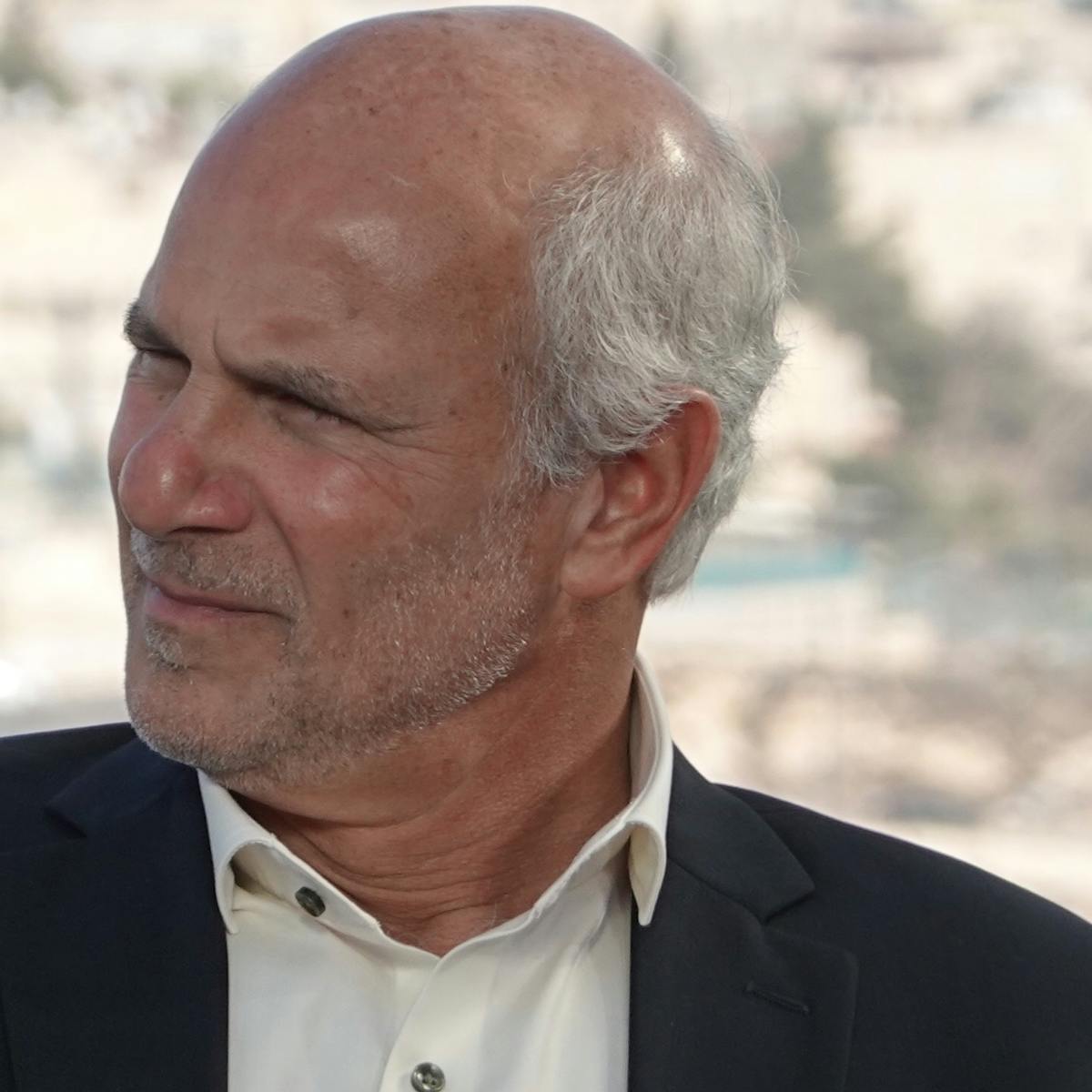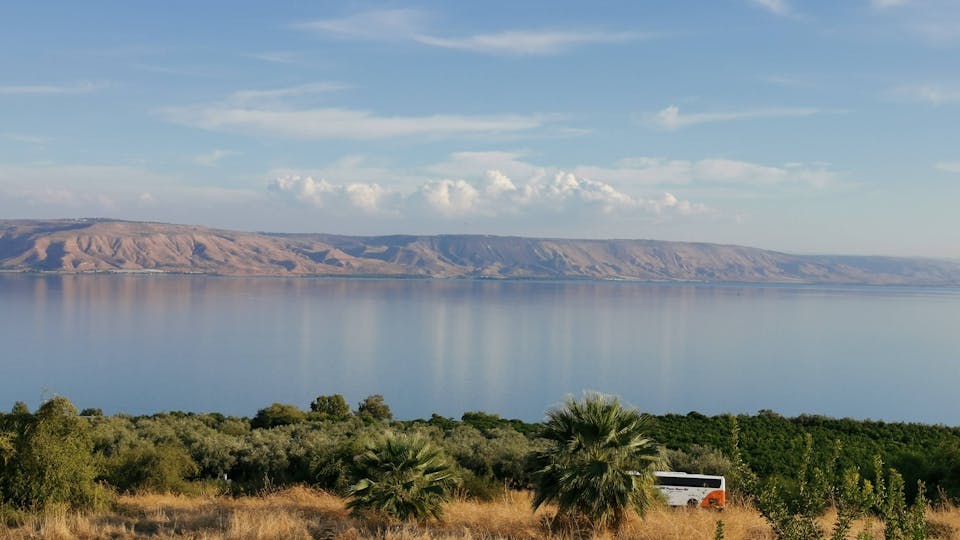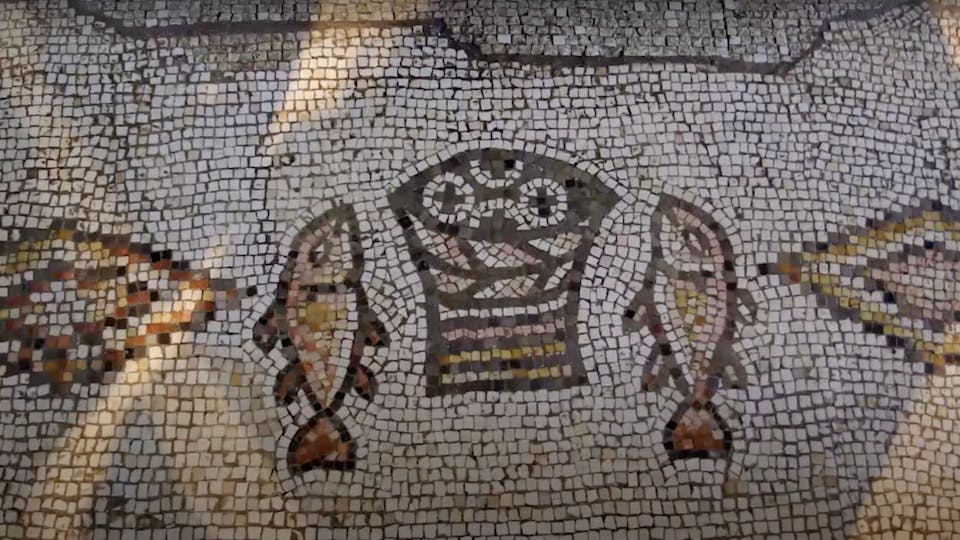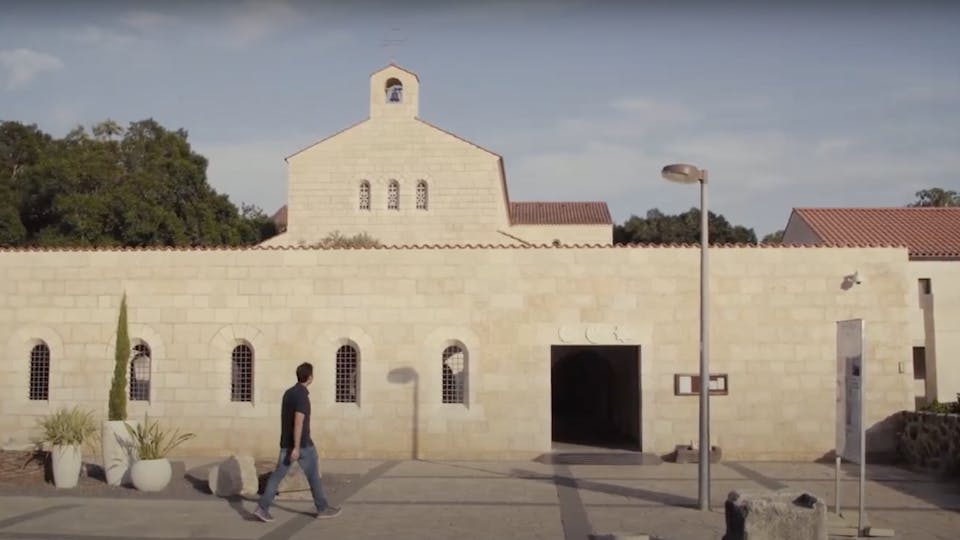The Complete Guide to Touring Tagbha

Traveling around the Sea of Galilee with one of our Sar-El Tours’ groups, you’ll find yourself immersed in biblical stories and fascinating accounts of wise parables and amazing miracles, most of which are associated with the life and ministry of Jesus during the early years of the First Century AD.
The site of Tabgha (pronounced TAB-GHA) is no exception, as visitors come face to face with one of Jesus’ most notable miracles and some of His final words to His disciples before His ascension to heaven.
Best known for Christ’s miraculous multiplication of loaves and fish to feed the multitude, the site also commemorates Jesus’ third appearance to his disciples after his resurrection, when he restored and commissioned Simon Peter to rise and serve as the leader of the newborn community of Faith.
Many believe that somewhere along this shoreline Jesus called Simon and Andrew to drop their fishing activities and follow Him, together with two other brothers, James and John, who were also preparing their nets for another fishing expedition with their father Zebedee.
Together, let us explore the site, its history, geography, and biblical significance.
Tabgha, Place of the Seven Springs
Known for its great abundance of fish by the local fishing industry for centuries, the actual site of Tabgha derives its name from the famous seven springs present there (only six have been discovered to date).
Well documented in historic records, the name “The Place of the Seven Spring” in Greek is pronounced “Hep-tapegon,” yet this early designation had gradually changed through the centuries by the different civilizations occupying the region, leading eventually to the modern-day Arabized pronunciation of the name as “Tabgha.”
The Geography of Tabgha
Located roughly two miles (3 km) west of the famous and well-developed site of the biblical village of Capernaum, Jesus’ headquarters during the years of His Galilean ministry, you will discover what is referred to as the “well of Capernaum,” also referred to as the traditional location for the calling of the disciples during the early days of the movement that Jesus stirred up.
Resting along the lush and beautiful northwestern coastline of the Sea of Galilee, your visit to Tabgha offers some of the most stunning vistas in the region with the colorful Golan Heights rising to the east, the placid Lake stretching south, and the Galilean mountain peaks climbing to the west and north.
With a plentiful supply of fresh water and warm weather year-round, Tabgha is always green and fresh, whatever time of year you might be there.
The seven historic springs found at the ancient Tabgha site are famous for producing water that is slightly warmer than the water of the Sea of Galilee.
This unique condition of warmer water flowing into a cooler lake creates robust and accelerated growth of algae, which in turn attract more fish that feed on these algae, causing this particular stretch of shoreline to be very popular among the commercial fishermen who worked the Lake for their livelihood for many centuries.

The History of Tabgha
There are plenty of indications pointing to the ancient and dynamic boating activity at Tabgha, including the recently discovered harbor. Coming into clear view every time the Lake’s water level is low, two distinct breakwater walls surface.
The first is the curved western causeway of nearly 200 feet (60 m) long, with a second perpendicular pier of about 130 feet (40 m). Together, they protected the broad man-made harbor which was entered into from the east, providing shelter and a safe staging area for fishermen and their families who lived and worked in the region for millennia.
This stretch of shoreline was no doubt a very favorite spot for nearby Capernaum and other communities, and the pebbled beach was certainly familiar to Jesus and his disciples.
When you visit Tabgha with one of our Sar-El groups, you’ll find it very easy to imagine Jesus strolling along the coastline, addressing the working men and their families, and teaching the multitudes from a boat anchored in the shallow harbor.
This well-watered land covered with trees and palms next to the seven springs is traditionally recognized as the staging ground for Jesus’ great miracle when He fed a crowd of five thousand men (not counting women and children).
With only five loaves of bread and two fish, Jesus fed a total of possibly 25,000 hungry mouths! More than that, this same beach is traditionally recognized as the place where He surprised His disciples when He appeared to them for the third time after His resurrection, fed them breakfast, and called Peter back to Himself (after his denial during the trial).
During the Byzantine period, Christian pilgrims erected monasteries, churches, and chapels throughout the Galilee to commemorate the ministry and miracles of Jesus.
According to archeologists, the earliest structure at Tabgha was a relatively small chapel (18 x 10 meters) which dates back to the 4th Century AD.
This was most probably the spot described by the pilgrim Egeria during her 4th Century travels, saying: “In the same place (not far from Capernaum) facing the Sea of Galilee is a well-watered land in which lush grasses grow, with numerous trees and palms. Nearby are seven springs which provide abundant water. In this fruitful garden Jesus fed five thousand people with five loaves of bread and two fish.”
While there is no doubt that early Messianic believers, followers of Jesus, and Christian pilgrims visited the site during the early centuries AD, the archeological record starts roughly at the 4th Century when the original monastery and church were erected by Byzantine Christians.
That original church was most likely destroyed in 614 during the Persian invasion of the Holy land and the consequent Arab military campaigns and was built over during the Islamic period as a small Arab village.
It was from that time forward that the site’s original name, “Hep-tapegon,” was gradually transformed to the Arabic sounding name “Tabgha.”
By the 18th Century, the land was purchased by a Catholic German association planning to construct hospitality fancily for pilgrims. However, as construction started, the workers discovered archaeological evidence of an early Christian complex that they could not further excavate due to Ottoman Islamic law.
Only in the 1930s, during the British Mandate, German archaeologists dug the area again and uncovered the Byzantine church's walls and mosaics. By 1981, after diligent work of restoration carried out by German Benedictines, the 1,300 years of “slumber” ended, and the original structure was put on display for the public, incorporating portions of the original mosaics with the modern construction.
Today, the church and surrounding land are property of the German Association of the Holy Land, and the site is maintained by Benedictine monks from the Dormition Abbey.

The Multiplication Church of Tabgha
1. First Church, 4th Century AD, Founded By Josepos
As was the custom of Byzantine Christians in the region, a small church was erected on the site during the 4th Century AD, possibly by a Jewish Christian named Josepos.
According to traditional records, Josepos, a descendant of a wealthy Jewish family from the nearby City of Tiberias, became a follower of Jesus during a visit to Asia Minor.
In his writings, the bishop who led Josebos to Faith recorded that Josepos founded four churches in the Galilee during his life, one of which is believed to be the original Church of the Multiplication of Loaves and Fishes.
The first record of this small church is mentioned in the writings of a pilgrim from Iberia named Egeria, who visited the Holy Land during the late 4th Century AD and documented her experiences. She wrote about visiting a church near Capernaum whose altar is situated on the rock on which Jesus fed the multitude, and also described the seven springs flowing by the church.
She only mentions one religious building (a church containing the stone on which Jesus placed the bread when dividing it for the multitude), but modern archeological excavations found other small chapels that had been built nearby.
They also determined that the site matched the Gospel description of "a solitary place", as no evidence was found of nearby houses or cultivation from that period.
2. Second Church, 5th Century, The Egyptian Custom
With increasing pilgrim traffic and attention, a much larger Byzantine church was built on top of the original structure during the second half of the 5th Century AD.
The benefactor of this second construction project was Martyrios, the Patriarch of Jerusalem, who was a native of Egypt. That may explain the reason that the church was constructed according to the Egyptian style at the time.
The Church of the Loaves and Fishes, as it is called, contains a number of mosaic floors.
These floors were most probably created by two different artists, presumably from Egypt, with the main themes of the mosaics containing various wildlife forms found in the Nile Valley rather than in the Galilee.
No doubt, the most famous mosaic in the church is the one commemorating the biblical miracle in portraying the loaves and the fish. It was most probably created by Saurus, a bright artist who, according to scholars, nevertheless misspelled his own name while signing his work of art.
The entire complex covered an area of 56x33 meters and included courtyards and various separate spaces used as workshops and lodging for the monks and visiting pilgrims.
3. Post-Byzantine Period of Tabgha
This magnificent Byzantine structure was destroyed sometimes during the first half of 7th Century AD as Persian and then Arab armies invaded the Holy Land and wrestled it away from the Byzantine Empire.
Over time the ruins of the church were covered by soil and debris, forgotten, and as the local population abandoned Greek and moved to Arabic, the name Hep-tapegon gradually became Arabized into Tabgha.
A local community was built on the site, and the first official record of the small Arab town of Tabgha is found in Ottoman tax records dating back to the 16th Century AD.
In 1911, a German professor named Paul Karge who began to excavate the site uncovered the outline of the ancient church, its altar, and even the famous original mosaic of the loaves and fishes.
The Ottoman authorities, however, stopped the excavation, and they were resumed only after the fall of the Ottoman Empire during World War 1. In 1932 a small wooden church was erected to protect the Byzantine structure and the beautiful mosaics.
During the conflicts surrounding Israel’s War of Independence of 1948-1949, the town of Tabgha was destroyed, but the church was spared. When Pope Paul VI visited the area in 1964, plans were already underway to construct a beautiful new Church on the site.
4. The New Restored Tabgha Church
The German architects who led the project studied the existing Byzantine structures, and rebuild the church along the lines of the original 5th Century church.
Construction began in 1980 and the result was a masterpiece of architecture, from the magnificent ancient mosaics to the beautifully carved marble columns and the Italian tiles of the red roof. Perhaps the best-known mosaic, on the floor near the altar, refers to the multiplication miracle, portraying a basket of loaves flanked by two fish.
The church is famous for its mosaics; unique among Byzantine churches in the Holy Land, and most of the floor is decorated in geometric patterns. The unique principal mosaics decorate both sides of the transept.
The carpets are also decorated with multi-colored representations of Middle Eastern flora and fauna. The flowers and animals are so exquisitely depicted that the visitor can identify lotus, oleander, lily, duck, snipe, heron, goose, dove, swan, cormorant, flamingo, and stork.
The church belongs to the Order of the Benedictines, is open to visitors, and most of our Sar-El Pilgrim groups enjoy this remarkable site year around.

Church of the Primacy of St Peter at Tabgha
The Church of the Primacy of Saint Peter is a Franciscan church also located on the Tabgha shoreline to commemorate the traditional spot of Peter’s reconciliation to Jesus and renewed assignment as a shepherd among the Apostles.
The modern structure was built in 1933 and, as is its neighboring Multiplication Church, it incorporates parts of an earlier 4th Century AD church.
During the 9th Century, the church was referred to as the “Place of the Coals,” mentioning the biblical account of Jesus' preparing a meal for the apostles on a charcoal fire.
Also first mentioned in the year 808 is the "Twelve Thrones", a group of heart-shaped stones placed along the shore to commemorate the twelve apostles.
The church features a limestone rock in front of the altar which is called "Mensa Christi", Latin for “Christ’s Table.” According to tradition, this is the spot where Jesus laid out bread and fish for the Apostles and commanded Peter to "Feed my sheep" after the miraculous catch of fish (John 21:1–24).
It is disputed whether this stone or the one displayed at the nearby Church of the Multiplication, is the one that the pilgrim Egeria described in her narrative.

4 Special Bible Verses for Tabgha
- John 21:6 – “Cast the net on the right side of the boat, and you will find some…”
- John 21:17 – “Simon, son of Jonah, do you love me more than these?... feed my sheep.”
- John 21:12-14 – “Jesus said to them, come and eat breakfast… Jesus then came and took the bread and gave it to them, and likewise the fish. This is now the third time Jesus showed Himself to His disciples after He was raised from the dead.”
- Mathew 14:19 – “Then He commanded the multitudes to sit down on the grass. And He took the five loaves and the two fish, and looking up to heaven, He blessed and broke and gave the loaves to the disciples; and the disciples gave to the multitudes.”
We invite you to contact us to learn more about our travel services and recommended itineraries for Tabgha and other regional pilgrim sites.
A visit to Israel can and should be a transformational and unforgettable experience, and we, at Sar-El Tours, are committed to the success of your upcoming visit to the Land where the Bible comes alive.